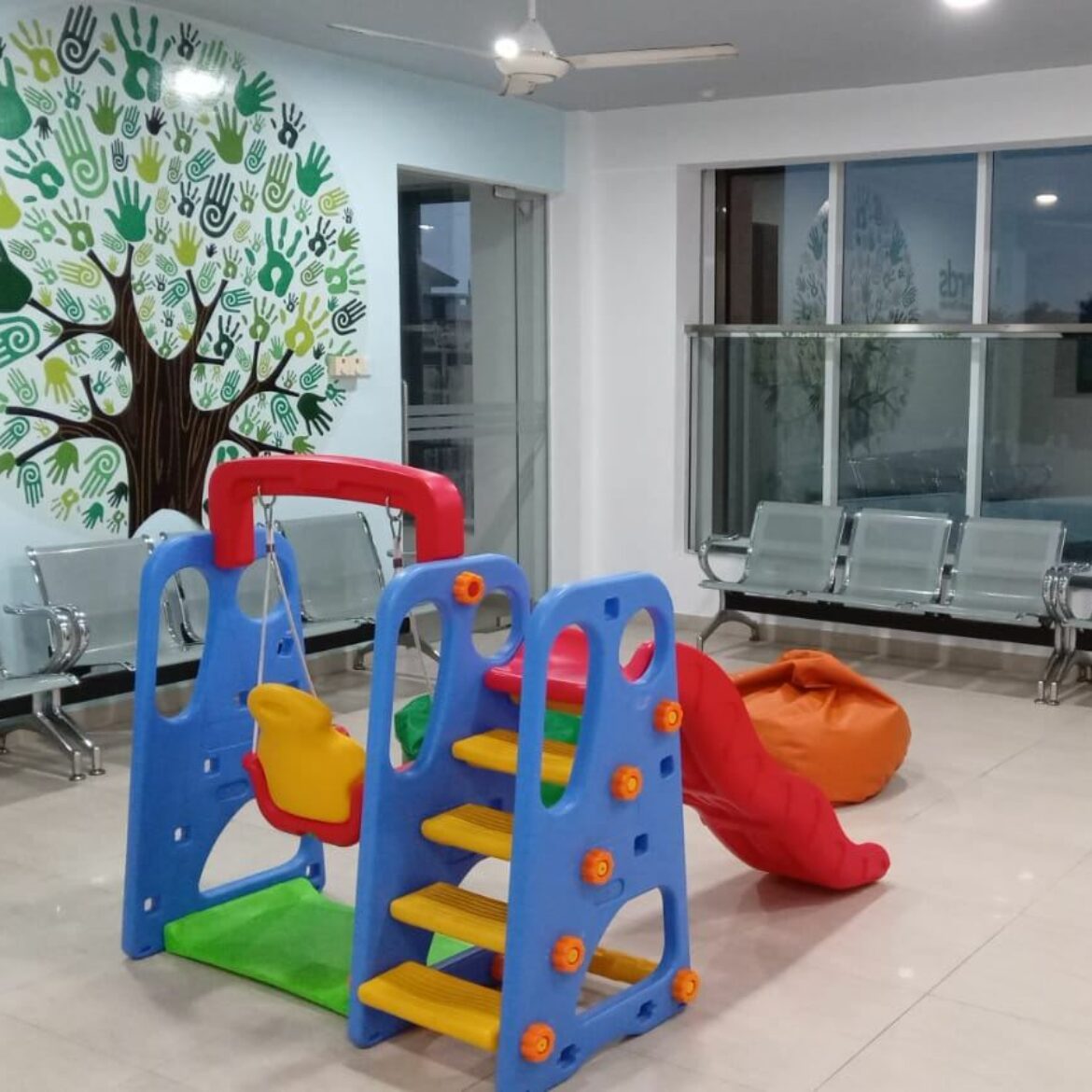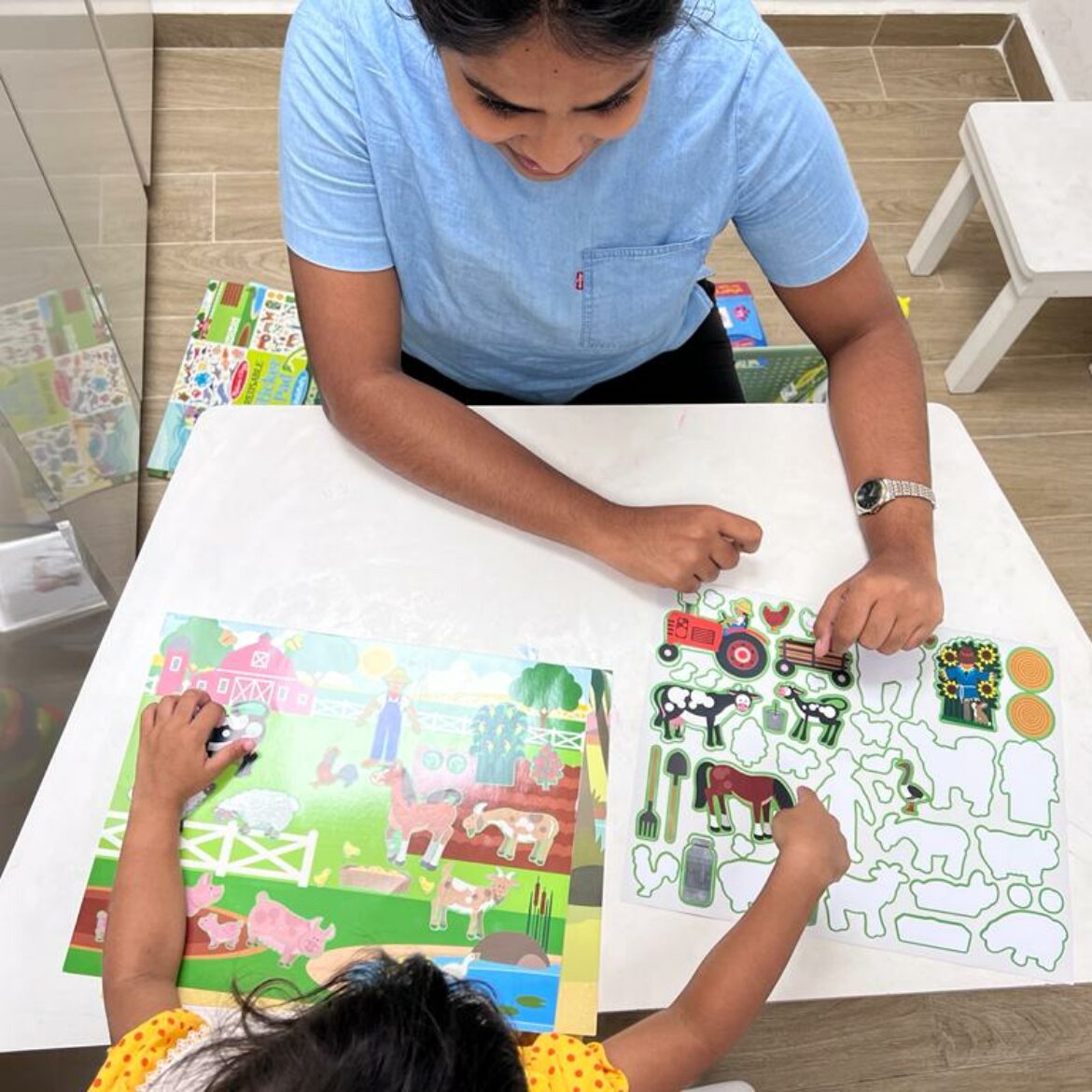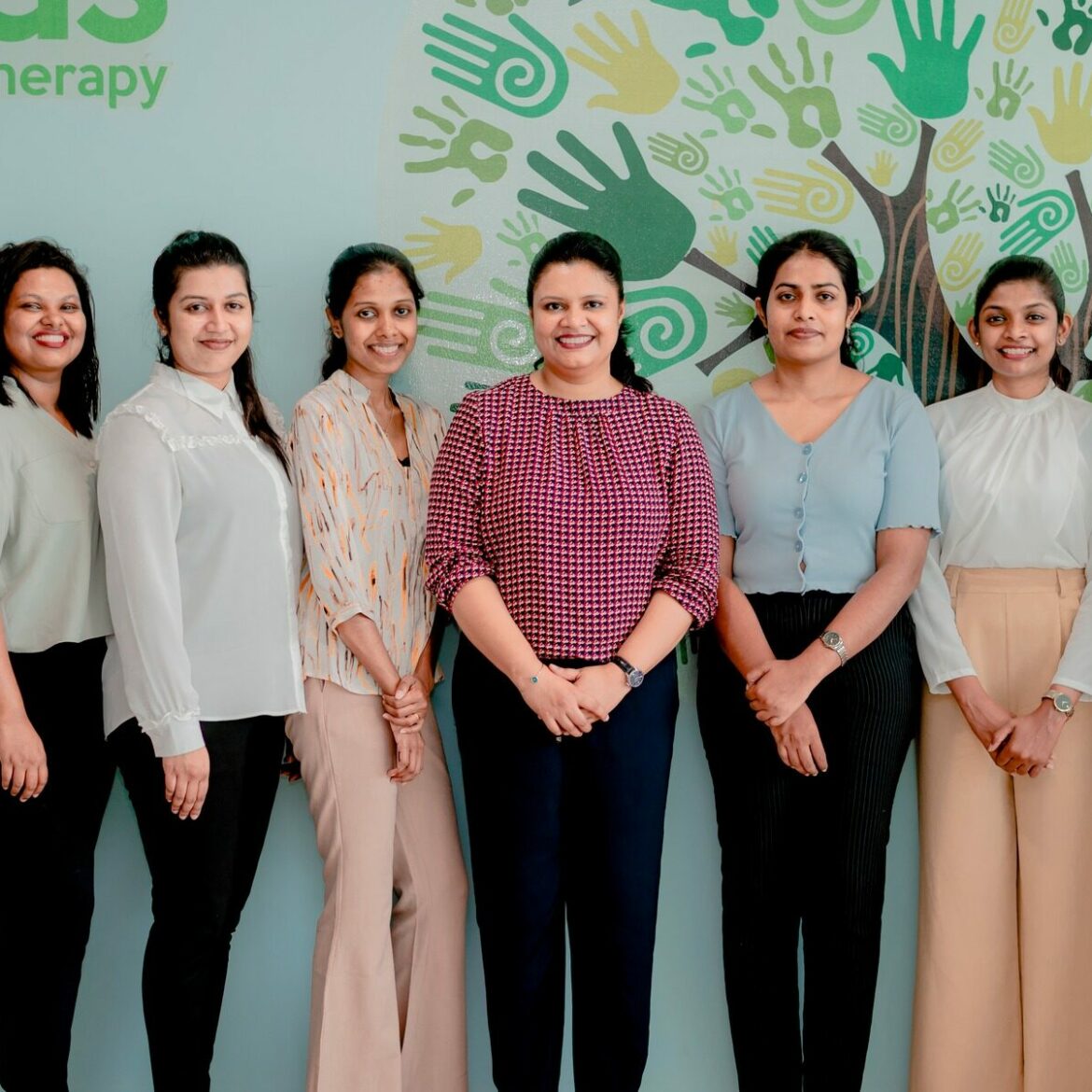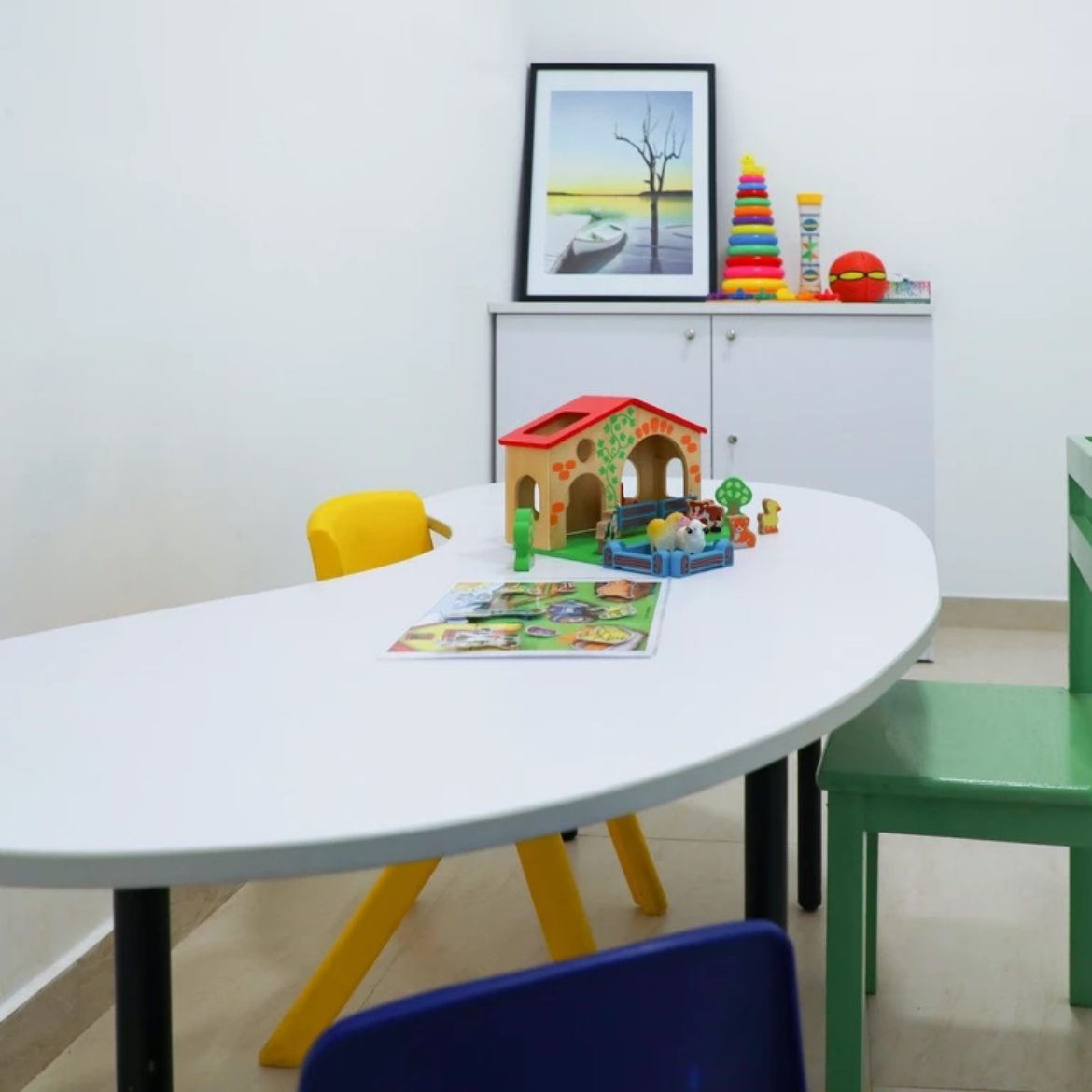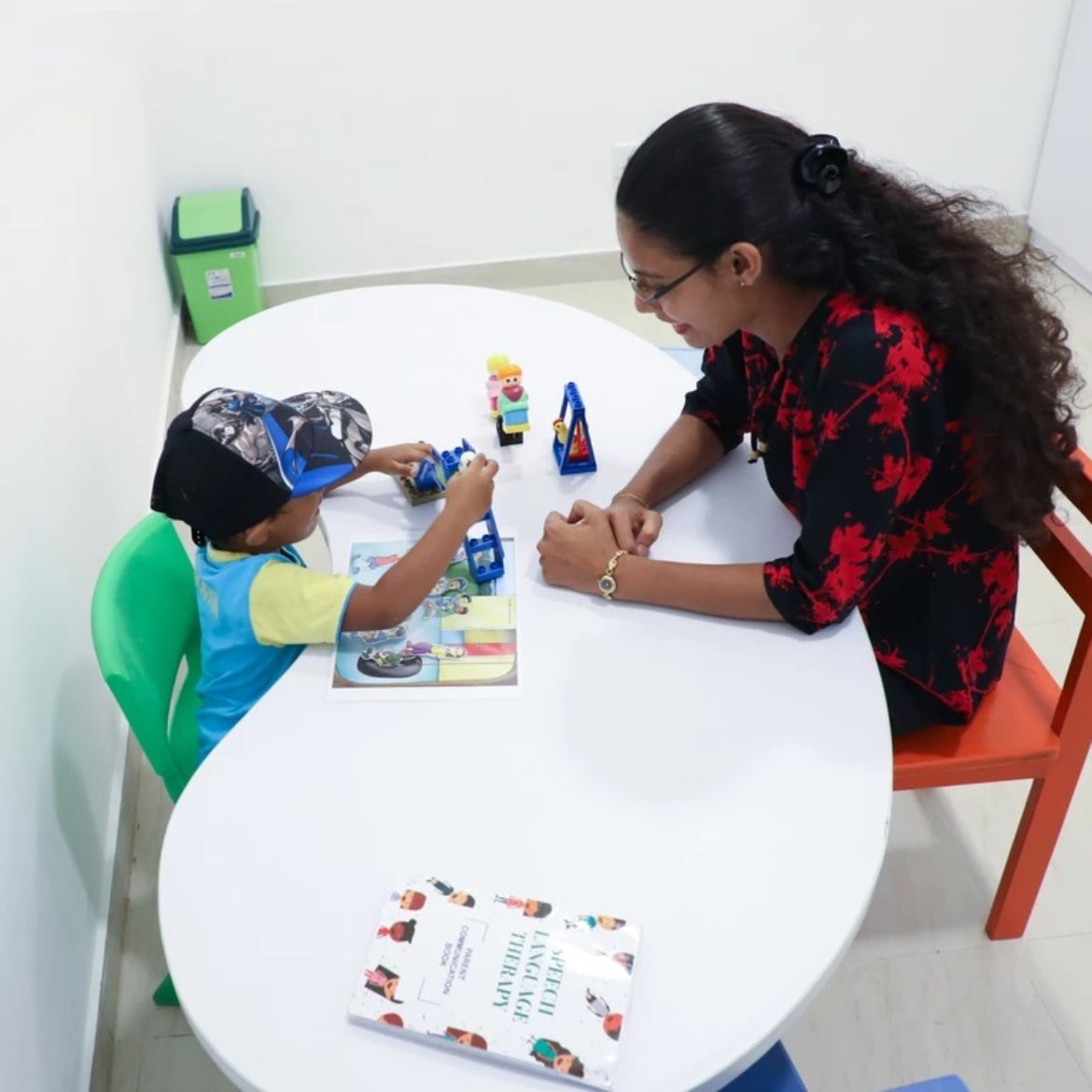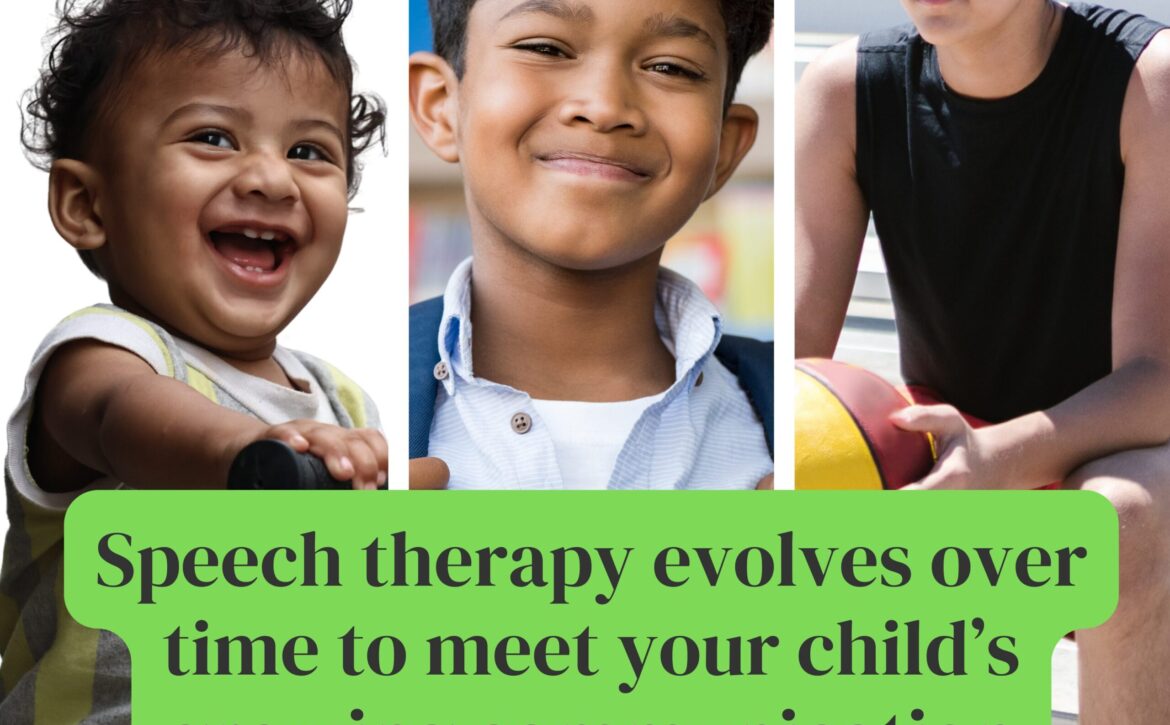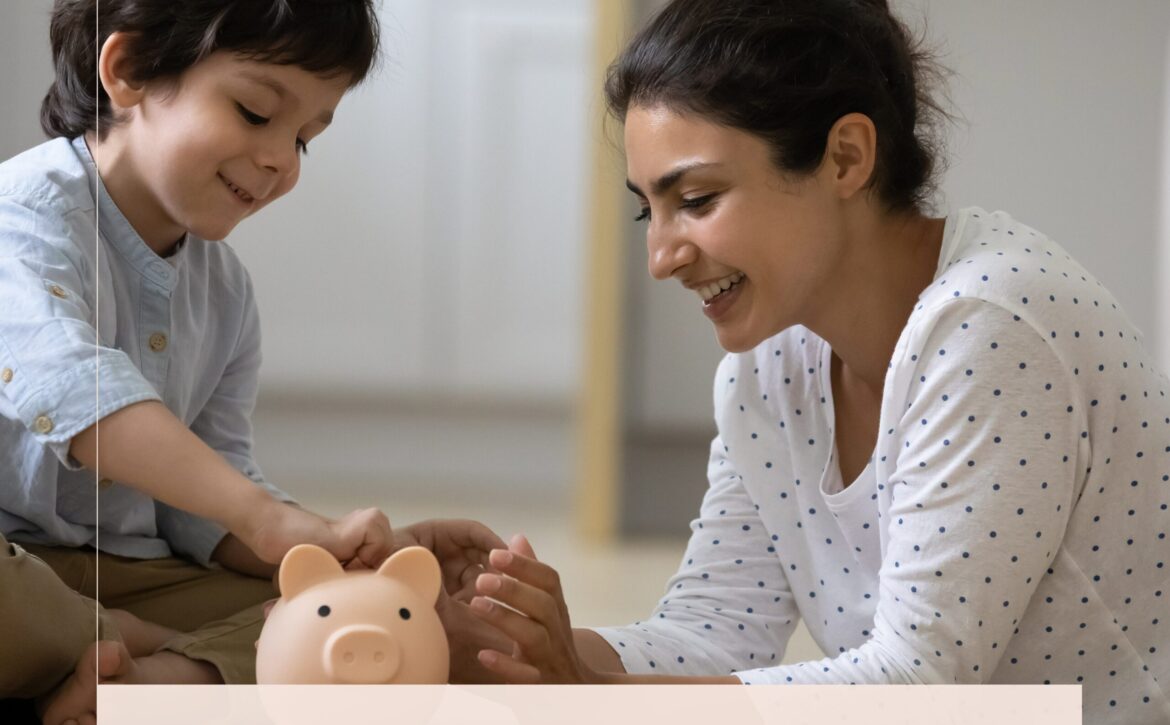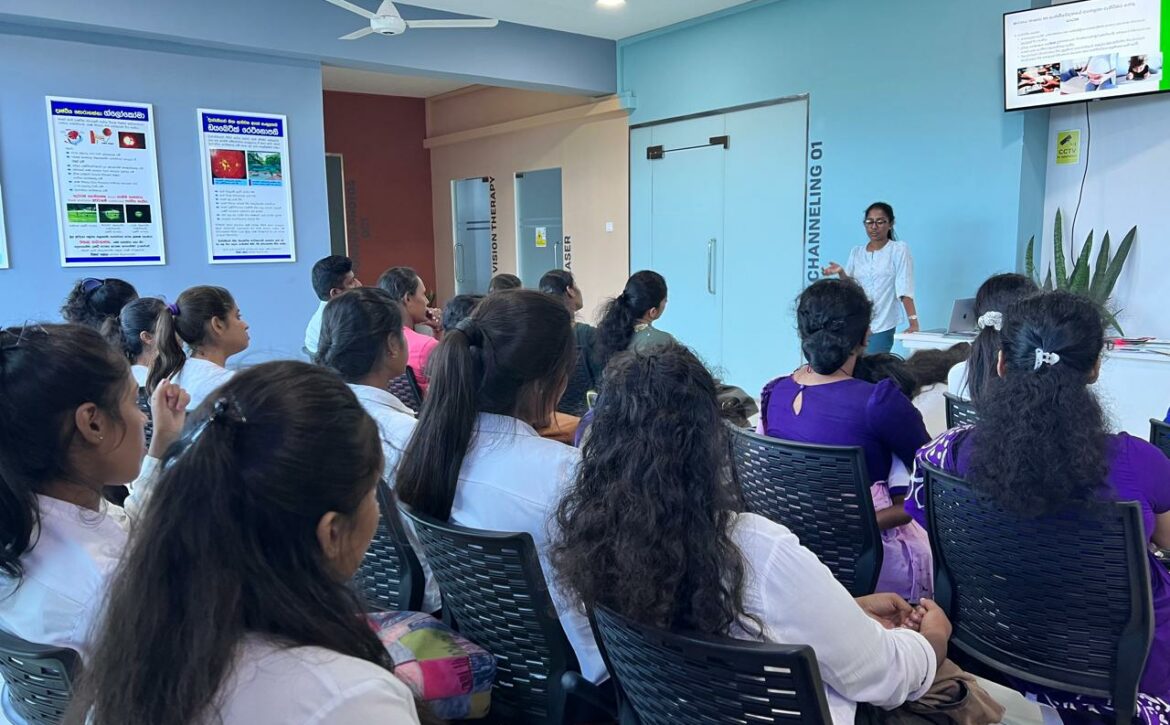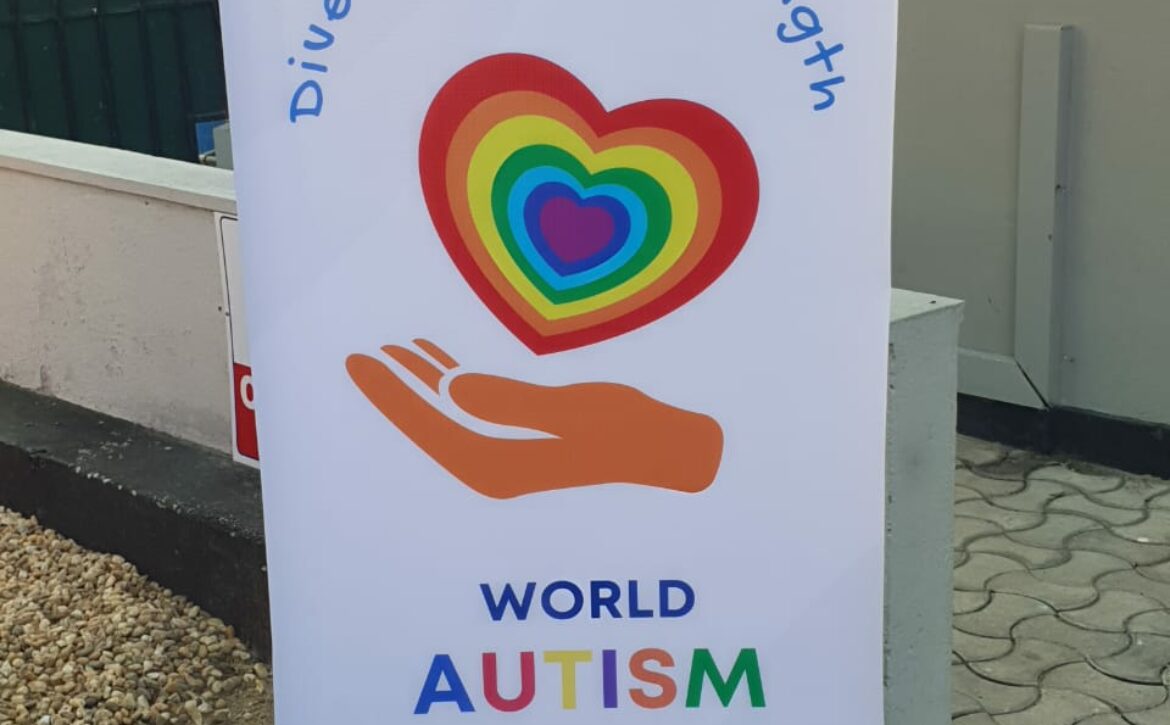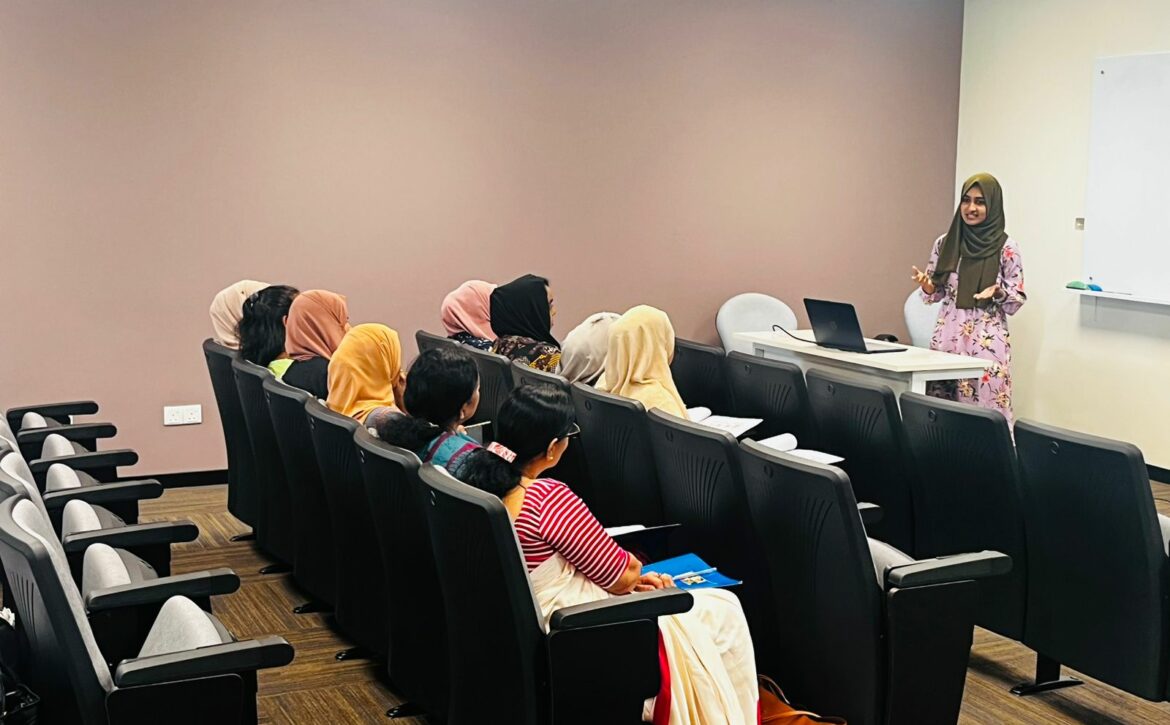
by Buddhima Samaraweera

Speech-Language Pathologists

speech therapy programs

environment
Discover Our Services
Words speech therapy offer many services for
children with communication needs.
Assessments
Speech Therapy
Online Therapy
Resources
Training and Workshops
Assessments
Assessment is the first step before starting speech therapy. The diagnosis of your child’s speech- language problems, his strength and weaknesses and future treatment plan was determined only after a through assessment. It generally involves an interview about your concerns, history of child’s development and observation of the child in a structured or natural settings. Information from teachers, caregivers and family members needs to be obtained if necessary. Following assessment tools will be used to determine your child’s level of speech, language development, strengths and needs. Assessment may take approximately an hour.
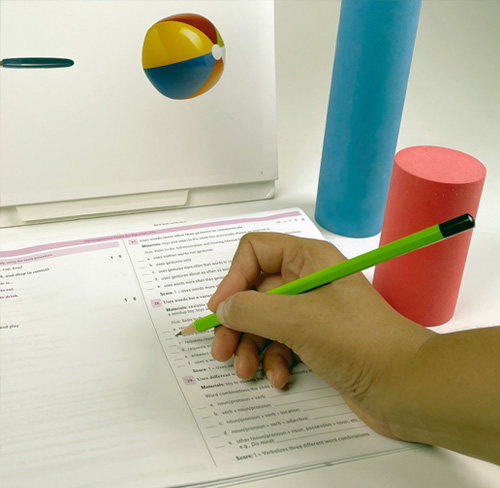
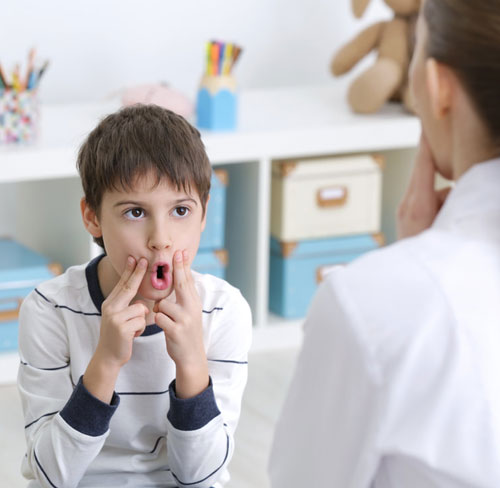
Speech Therapy
Speech therapy sessions always follow a detailed assessment. Usually, a speech therapy session lasts for 45-60 minutes. A range of specific goals will be developed as a part of your child’s therapy program. These goals are individually tailored for your child’s needs and will be explained to you in the first session of speech therapy. We have seen children progress faster and better when parents are actively involved in the intervention program.
Online Therapy
Online speech therapy/tele practice delivers speech-language therapy services using telecommunication technology by linking you and the clinician for assessment, intervention and/or consultation. American Speech-language-Hearing Association (ASHA) recommends telepractice to deliver services for both children and adult. The standard of care is the same as you are seen in person. Technology is only the mode of delivery.

Resources
These speech therapy materials were designed by an experienced speech-language pathologist and used with kids who need various levels of support to grasp speech and language skills. Parents have observed that it is easy to get kids engaged in speech therapy practice at home. Go ahead and browse to find what your child will benefit.

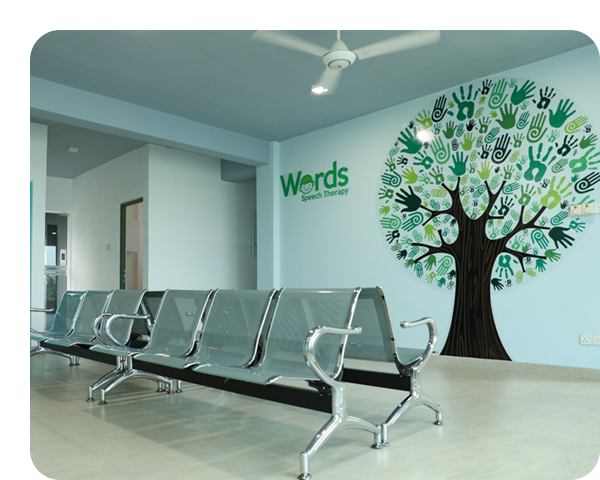

Why ChooseWords Speech Therapy
Driven by connection, compassion, and care, Words Speech Therapy works closely with parents, families, and teachers to help children achieve their communication goals. Our therapists are highly qualified and experienced in using evidence-based strategies to ensure the highest quality of care.
Autism is a neurodevelopmental condition that manifests during early childhood and persists throughout an individual’s life. The exact causes of autism remain unknown, though research suggests that a combination of genetic factors and environmental influences are significant contributors. Children with autism face various communication challenges in daily activities, ranging from expressing basic needs to engaging in conversations with others.
Characteristics of Autism
Autism presents a spectrum of conditions that vary widely from one individual to another. Autism can be typically identified by the age of 18 months. Key indicators include:
- A lack of interest in surrounding events.
- Avoidance of eye contact.
- Preference for solitude.
- Difficulty with appropriate play or object use.
- Seeming inattention when spoken to.
- Limited interest in people and toys.
- Challenges in using gestures, words, or facial expressions for communication.
- Trouble understanding others’ speech.
- Difficulty with social cues in conversations.
- Limited verbal communication or echolalia (repeating what others say).
- Use of tantrums or other behaviours as a form of expression.
- Discomfort with changes in routine.
- A fascination with parts of objects, such as the wheels of a toy car.
It is important to note that these are not the only conditions of autism, and not all children will display all of these behaviours.
Diagnosis of Autism
Autism is diagnosed by a multidisciplinary team of healthcare professionals, which may include paediatricians, child psychiatrists, neurologists, developmental psychologists, behavioural therapists, speech-language pathologists, physical or occupational therapists, and sometimes audiologists to assess hearing. This team works collaboratively, sometimes conducting assessments individually, to compile a comprehensive understanding of the child’s condition.
Role of Speech-Language Pathologists in Autism Care
Speech-language pathologists play a crucial role in assessing and developing intervention plans for children with autism. They evaluate a child’s speech, language, and communication skills through observations and discussions with parents, caregivers, and teachers. Their goal is to identify strengths and areas needing improvement to tailor effective communication strategies.
Interventions Employed by Speech-Language Pathologists
Speech-language pathologists employ various evidence-based strategies to enhance communication skills, including:
- Improving listening and attention in different settings.
- Encouraging turn-taking in conversations.
- Broadening interests, such as engaging with new toys or foods.
- Enhancing understanding and appropriate response to verbal communication.
- Developing vocalization, sound and word imitation, vocabulary acquisition, grammar, and speech clarity.
- Fostering interactions with peers.
- Using language effectively to ask questions, initiate and maintain conversations, and narrate stories.
- Enhancing phonological awareness to support reading and writing skills.
For non-verbal or minimally verbal children, speech-language pathologists may also introduce alternative communication methods, such as the Picture Exchange Communication System (PECS), picture charts, and communication boards.
Seeking Help
If you suspect that your child might have autism, it is crucial not to delay seeking advice from your child’s doctor. Early diagnosis and intervention can significantly improve outcomes. By understanding autism’s complexities and recognizing its signs early, parents and caregivers can better navigate the path to effective support and intervention.
Developmental Language Disorder (DLD) is a common but often under-recognized condition that affects a child’s ability to acquire, understand, and use language appropriately for their age. This condition, previously referred to as Specific Language Impairment (SLI), is not caused by factors like intellectual disabilities, neurological damage, or hearing impairments, nor is it due to a lack of exposure to language. DLD is intrinsic to the individual and persists throughout life, impacting educational, social, and occupational outcomes.
Characteristics of DLD
Children with DLD typically display difficulties in several aspects of language use:
Expressive Language: Challenges in using language to express thoughts, ideas, and feelings. Children might have limited vocabulary, struggle with sentence structure, and find it hard to use language in a socially appropriate manner.
Receptive Language: Difficulties in understanding what is being said to them. This may include problems with following instructions, processing spoken language, and understanding complex sentences.
Pragmatics: Problems with the social use of language, such as understanding jokes, picking up on non-verbal cues, or maintaining a topic during conversation.
Phonology and Morphology: Issues with speech sounds (phonology) and the structure of words (morphology) can be evident, affecting both speech production and the understanding of similar sounding words.
Causes of DLD
The exact causes of DLD are not fully understood, but research suggests a strong genetic component. Environmental factors, such as the language and communication environment a child is exposed to, can also play a significant role. However, DLD is not simply the result of inadequate language exposure; it stems from inherent difficulties within the brain’s language processing capabilities.
Diagnosis of DLD
Diagnosing DLD involves a comprehensive assessment by speech-language pathologists who evaluate a child’s language skills in comparison to typically developing peers. This assessment usually includes standardized tests and observations in various settings. Since DLD is a diagnosis of exclusion, other possible causes for language difficulties need to be ruled out first.
Management and Intervention
While there is no “cure” for DLD, early intervention is crucial and can significantly improve outcomes. Speech and language therapy is the primary treatment approach, focusing on enhancing language skills through specific strategies tailored to each child’s needs. Therapies may include:
Direct Intervention: Structured sessions with a speech-language pathologist to develop specific language skills.
Indirect Intervention: Training for parents and teachers on how to support the child’s language development in everyday situations.
Use of Technology: Software and apps designed to enhance language learning through interactive, engaging activities.
School-based Support: Individualized education plans (IEPs) and support within the classroom to accommodate learning needs.
Living with DLD
Understanding and supporting a child with DLD involves recognizing the pervasive nature of the disorder and its impact on the child’s academic achievements and social interactions. With the right support, children with DLD can achieve successful academic and social outcomes. Parents and educators play a crucial role in this support system, ensuring that children receive the necessary resources and accommodations to thrive.
Stammering/stuttering is the disruption of the normal flow of speech. Developmental stammering is common in early childhood between 2 – 5 years. Often children outgrow this type of dysfluencies, but many children continue stammering into school years. A well-planned speech therapy program can help children to manage their stuttering successfully.
Is it really stuttering?
Some dysfluencies during early childhood disappear in a short period of time. But some errors persist. As a parent, you need to be aware of what is real stammering and what is not. If your child has the below risk factors, we recommend you meet a speech-language therapist for help.
- Family history of stammering.
- Having dysfluencies for more than 6 months.
- Trying to avoid speaking certain words or situations.
- Prolong the first sound of the word (e.g., Ssssssssssssnake).
- Repeat the first sound or the syllable of the word (e.g., m-m-m-my, ma-ma-ma-my ).
- Having a block and not able to speak the word out.
- Secondary behaviours like blinking eyes while saying words, stomping feet, tapping hand while speaking.
- The onset of stammering after the age of 4
- Male gender
How can parents help young children to ease their speech?
- Slow down the rate of your speech.
- Listen to your child with interest without interrupting.
- Give undivided attention and acknowledge what your child says.
- Convince the child that you as a parent has plenty of time to listen to him. This is a better way than saying “speak slow”.
- Encourage other family members to take turns when talking. E.g., Not two members speaking at the same time.
- Try your best to have a pleasant and calm environment at home.
- Talk about the situations that your child is fearful of. Provide solutions to overcome the fear.
- Read stories together at a slow pace.
- Avoid too many questions.
- Wait till he/she finishes his speech completely before you start speaking.
- Repeat stammered words back to him/her at a slow rate.
- Do not speak on his/her behalf. Patiently listen till he finishes the sentence.
Speech sound development is a gradual process. It is common to see young children have trouble pronouncing words correctly. Children develop and master speech sounds at different age levels. By three years of age, children should be able to say p, b, m, n, h, w, t, d, k, and g in words. When they reach 4 years, children are able to say /f/, /y/ and /v/ sounds clearly in words. By 6 years, the master l, v, ch, sh, j and still make mistakes in /s/, /r/, /z/, /th/ sounds. In general, by the fourth birthday, children’s speech is 100% clear to their parents. It is important to keep in mind that every child has individual variations in their development.
Speech sound disorders involve difficulties or delays in developing age-appropriate speech.
- The structural or functional problem in speech mechanism (e.g., Cleft lip, Cleft palate)
- Associate with language disorders
- Difficulties in coordinating oral muscles to execute speech (e.g., Apraxia of Speech)
- Muscle weakness (e.g. dysarthria due to cerebral palsy).
- Hearing loss
If you notice that your child is having difficulties in saying sounds correctly, meet a speech-language pathologist for a comprehensive assessment. A well-planned speech therapy program can help your child to overcome speech difficulties.
Our Team
Our team consists well qualified, and Sri Lankan Medical Council licensed speech-language pathologists. In addition, we work collaboratively with occupational therapists, behaviour therapists, special need educators and music therapist to provide services for those who require support across multiple areas of development.
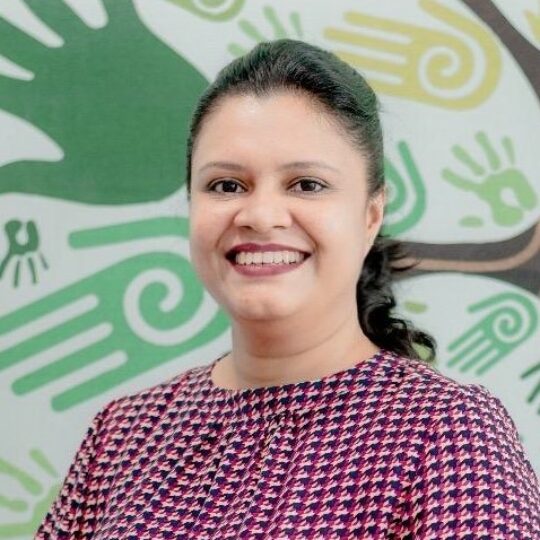
Buddhima Samaraweera, PhD (SLP)
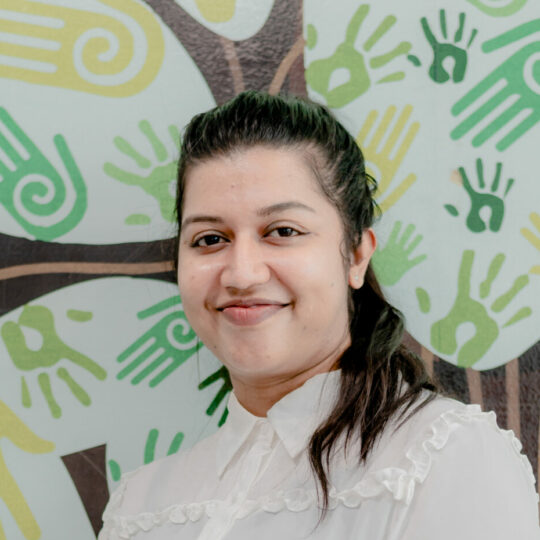
Ramesha Nirdeshi B.Sc. (SHS) University of Kelaniya

Dilini Rajakaruna B.Sc. (SHS) University of Kelaniya
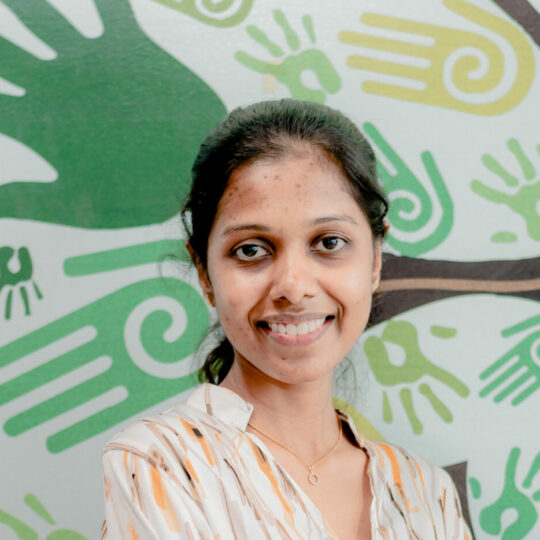
Piyumi Prabuddhika B.Sc (SHS) University of Kelaniya
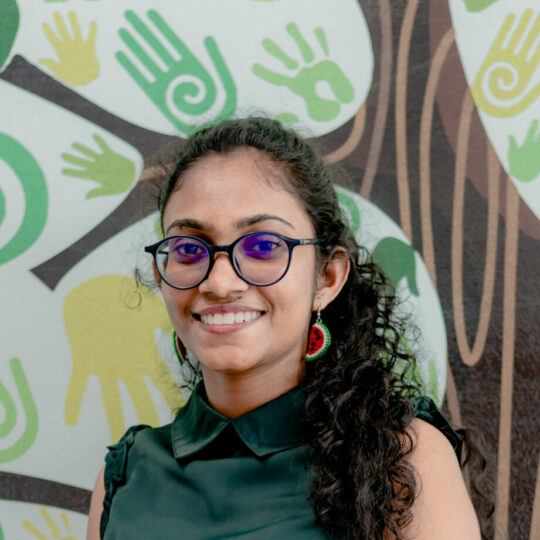
Amanda Liyanage B.Sc (SHS) University of Kelaniya
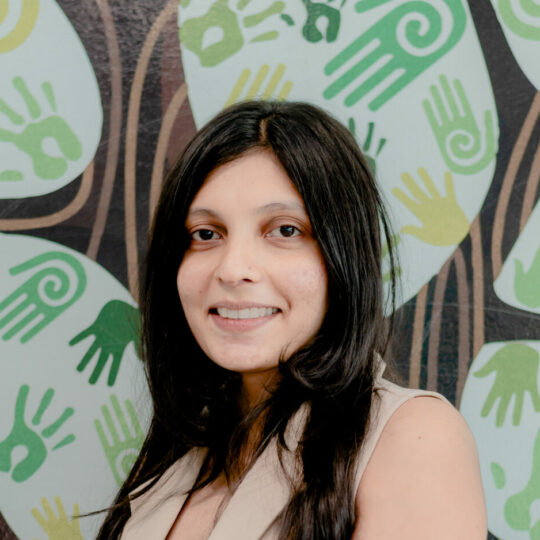
Shaini Maleesha BASLP (Bangalore University, India)

Athuli Kiriwaththuduwa BASLP (Bangalore University, India)

Imasha Dhananjani B.Sc. (SHS) University of Kelaniya
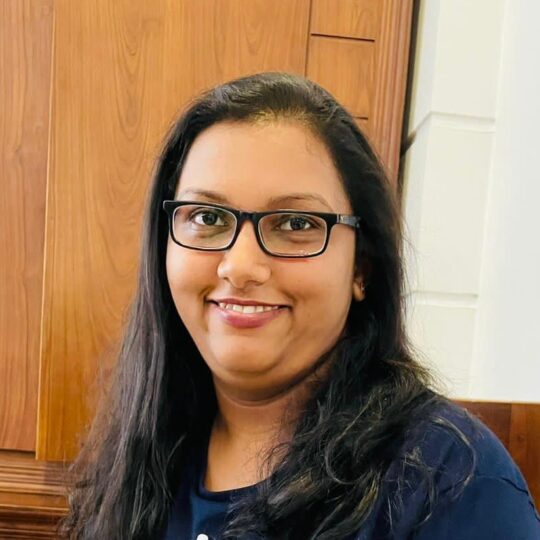
Yasuri Kiriella B.Sc. (SHS) University of Kelaniya
Our Photo Gallery
What Parents Say
I have been taking my daughter to Miss. Buddhima for speech therapy since she was two years old. Today four years down the line I'm so much grateful ... Read More
Mrs. Jiffry
My son was having communication difficulties at the age of two. He was able to speak a few words and didn't communicate like other children. Read More
Mrs. Pinnadoowe
My son is five years old and has been receiving speech therapy from Buddhima for almost six months. We couldn’t identify Autism at the initial ..... Read More
Mr & Mrs. Perera
Buddhima is an excellent speech therapist with a big heart. She does not treat her patients as mere patients but takes a very personal interest in their .... Read More
Jenifer Rajah
Dilini met my daughter, a little girl, about one year ago. When we met, she had less than 25 words that she could speak. Dilini and my daughter bonded .... Read More
Mr. & Mrs. Rathnayake
We are very happy with my son's progress. He has picked & developed fast than expected over e past nine months, out of which much sessions .... Read More
Mother of a 5 year old
We came to "WORDS SPEECH" when our daughter was just two and half years old and could only speak very few words, and now, after one year .... Read More
Happy Parents
Today as a mother with a smile on my face, I was able to write these words because of
the dedication, hardworking, patience, and love .... Read More
Happy mom
When Mishy turned two years old, we noticed that she was so different from other
children her age. The paediatrician from the Maldives .... Read More




